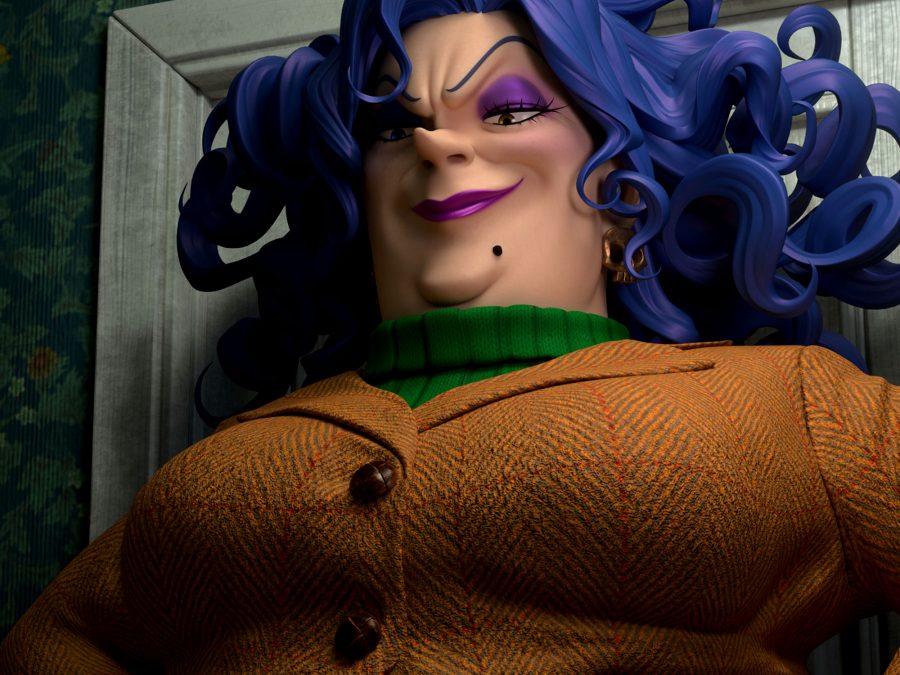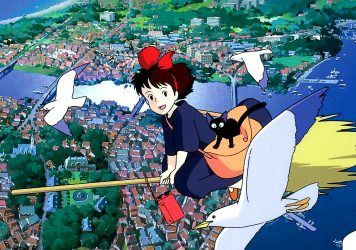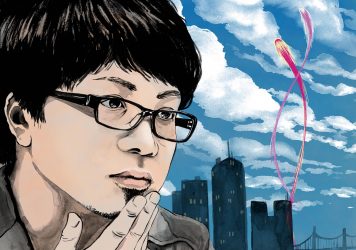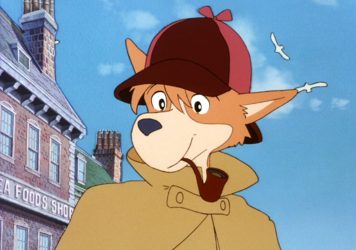Studio Ghibli’s first computer-animated feature boasts bags of charm and one its most endearing heroines.
In Mami Sunada’s insightful documentary The Kingdom of Dreams and Madness, director Gorō Miyazaki is shown discussing plans for From Up on Poppy Hill – his second directorial feature – and expressing a lack of enthusiasm to make another traditional Studio Ghibli feature.
He’s less attached to the old ways of animating than his colleagues – his television series Ronja, the Robber’s Daughter used cel-shaded computer animation to cultivate a more expansive world. It makes sense that if anyone was going to play with 3D computer-generated imagery at Ghibli, it was going to be Gorō.
Used to the luscious hand-drawn animation of Hayao Miyazaki and Isao Takahata, it’s easy to see why the kneejerk reaction for many seeing Earwig and the Witch has been to recoil in horror. By pivoting to CG, this new generation have taken the exaggerated lines of their foreparents and fleshed them out into a more tangible world.
At first we appear to be in familiar narrative territory, as the story is based on an unfinished novel by Diana Wynne Jones, who also wrote Howl’s Moving Castle. It’s about a young girl called Earwig who begs her foster mum, Bella Yaga, to train her as a witch – with magical hijinks and talking black cats aplenty. But there are signs that Gorō is letting go of the past – the yellow Citroën 2CV from Hayao Miyazaki’s debut feature, The Castle of Cagliostro, gathers dust in the witch’s basement.

Earwig may follow in the footsteps of Kiki or Nausicaä as a headstrong Ghibli heroine, but she’s distinctly mischievous, even cruel in her behaviour, without any clear arc of moral change, making for a more complex, modern characterisation.
Gorō’s taste is less neat and classical than his father’s, as he crafts layers of grime in Bella’s laboratory to bring the backdrops to nauseating life. In contrast to the symphonic swellings of Ghibli mainstay Joe Hisaishi, Satoshi Katabi’s score uses electronic proto-rock to accompany the punk aesthetic. It’s far from violin-making and John Denver in Whisper of the Heart, but Earwig is similarly appreciative of the power of music – it’s just celebrating a different genre, one which lends itself more obviously to the psychedelia CG animation is capable of.
Earwig and the Witch similarly uses the sensory capabilities of 3D to evoke more convincingly its British setting. Opt for the anglophone dubs and you’ll be met with the familiar dulcet tones of Dan Stevens and Richard E Grant, fitting for a milieu replete with pubs, orphanages, and wholesome home-cooked meals. Indeed, when you think of food in the films of Studio Ghibli, you’re more likely to picture steaming bowls of ramen than eggy bread, fish and chips, or shepherd’s pie.
In its striking Britishness, Earwig and the Witch is akin to Hiromasa Yonebayashi’s Studio Ponoc debut, Mary and the Witch’s Flower, based on Mary Stewart’s children’s book. Doing his part to keep his father’s work alive and relevant, Gorō Miyazaki steers the Ghibli ship even further away than Yonebayashi dared, resulting in the studio’s most cheerily radical film to date.
Earwig and the Witch is released in cinemas on 28 May. For more info visit elysianfilm.com
Published 24 May 2021
Tales of Earthsea and From Up on Poppy Hill are criminally underrated.
The CG animation creates a 3D world for Ghibli’s latest heroine to charm our hearts.
A perfect blend of old and new and a delightful update to the Ghibli formula.

In the mid ’80s, the anime stable was struggling following back-to-back box office flops. All that changed with the arrival of a young witch.

Meet the Japanese director behind the anime smash hit Your Name.

A copyright dispute around 1984’s ‘Sherlock Hound’ freed the Japanese animator to establish Studio Ghibli.